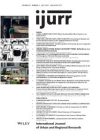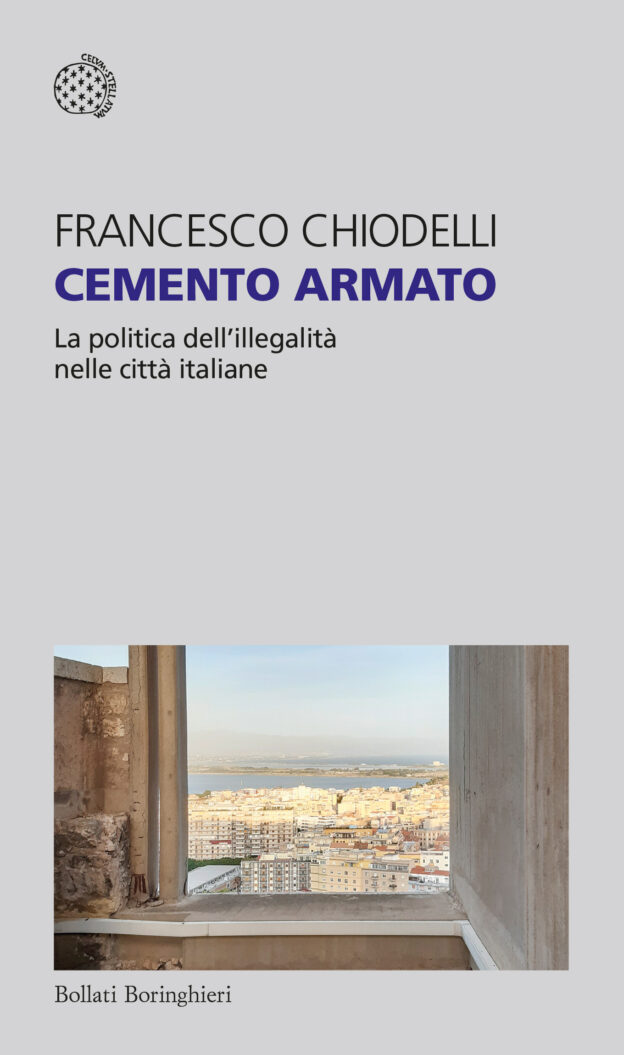‘Let’s hope that 2013 will be a year full of garbage, refugees, immigrants, displaced persons, minors, rainy so grass grows to mow, and maybe with some blizzards: yay for social cooperation’ (Chiodelli, 2023: 124–5).
As most people would probably agree, these are rather unusual New Year wishes. They express the hope that things will go wrong, terribly wrong, so that it will be possible to speculate while pretending to fix them. These words were sent from an entrepreneur based in Rome to his accomplice and were intercepted in the context of a major investigation focusing on corruption and criminal infiltration in the municipal administration of the ‘Eternal City’.
The sentence quoted above is perhaps also the best representation of why Francesco Chiodelli’s book Cemento armato: la politica dell’illegalità nelle città italiane [Reinforced Concrete: The Politics of Illegality in Italian Cities] is so necessary. The book’s central argument posits that illegal practices—whose protagonists include bureaucrats at all levels, politicians, entrepreneurs, professional criminals and ordinary citizens, all motivated by the most disparate of interests—are not isolated incidents or exceptions when it comes to the construction of urban spaces. Rather, they are a constitutive, or even ‘normal’ (albeit dysfunctional) aspect of city development. This implies that we cannot hope to understand the dynamics of urban change if we only take account of the choices and movements that occur ‘above the table’ and in plain sight.
The book is organized into five chapters with an introduction and a conclusion. Each of the main chapters provides an overview, through commented narratives, of a specific way of being and acting outside the bounds of the law. This gives us stories of unauthorized cities, squatted and informal cities, or corrupt and criminal ones. Of course, these are nothing more than categories selected by the author and, as with any category, they are not sealed compartments: sometimes they blend and intersect, and very often they occupy the same territory. These cities are, after all, always the same cities, overlapping with one another and imbricating with the legal ones, often making it very difficult to draw a clear dividing line.
One of the book’s main arguments is indeed precisely to show how the border between what is legal, or illegal is fragmented, can be easily moved, and often barely exists. In the words of the author, ‘illegality cannot be regarded as a sphere outside the law, but must be read as a field in which norms and the state continue to exert their action’; often ‘with an intentional production, by public institutional actors, of illegality in the urban sphere’ (p. 14).
Reading these pages creates the impression of leaping around the Italian peninsula, traversing a multitude of urban centres of different sizes populated by various souls of different political colours. The thread which connects them all is not one of geographical continuity, but rather the discovery of the lowest common denominator among such otherwise incredibly diverse contexts. This common ground is the prevalent and enduring presence of illegal practices in the planning, construction and inhabiting of cities. From Desio, a mid-sized town in the northern region of Lombardy, to the metropolitan city of Naples, passing through Milan, Rome and other, lesser-known centres, the reader is guided through the illegal practices and lives of people who either retreat into the ‘underground’ out of necessity, or instead play a pivotal role in its construction as they seek to make bigger profits.
While Chiodelli’s book is not the first—nor, hopefully, the last—to examine urban practices that operate beyond the bounds of legality, or despite legality, or even in line with what the law itself makes possible, what sets it apart from other similar works is the clarity with which it elucidates the ordinariness, intentionality, longevity and precise political rationale of such practices.
To remove any ambiguity, the concluding section delineates the existence of a deliberate politics of illegality that is enduring, pervasive and selective. This selectivity is evident in the way illegal behaviours are socially, linguistically and politically treated: certain acts—i.e. those which can be traced to the politically relevant class—are systematically condoned and legitimized, while others—typically those perpetrated out of necessity by the most marginalized (and often undesired) segments of the population such as squatters, migrants, and the homeless—are promptly repressed. This double standard, applied through a ‘carrot and stick’ policy, also serves instrumentally to obscure the fact that, in many instances, illegality is not the root issue but rather a symptom of deeper systemic problems.
However, to address these would necessitate a profound re-evaluation of the way entire sections of the administration (and city planning in particular) function. It would also require acknowledging that ‘urban planning is a field of knowledge … that lacks any certainty’ (p. 105), and that most decisions, while seemingly supported by hard evidence, are ultimately grounded in ethical ideals and political interests, rendering them inherently negotiable. This effort is too wide, too complex, and perhaps of no great interest to those whose job it would be to work towards it. Consequently, reverting to sedimented—though perfectly adaptable—illegal channels and practices is, paradoxically, the ‘safest option’, and one on which many of those who administer, invest in or contribute to building the city continue to rely.
While the book has been written for a non-academic audience (although some previous familiarity with urban discourses would surely be useful), and therefore does not follow the dictates of academic writing, the information it contains is grounded in years of meticulous research. Yet perhaps the most important thing here is not how this volume came to be, but the use that can be made of it. When reading its pages, the impression it gives is that it could act as a starting point for future research in order to think about—and around—illegality as a praxis that is (willingly or otherwise) constitutive to the formation of cities.
Daniela Morpurgo, Politecnico di Torino
Francesco Chiodelli 2023: Cemento Armato: La politica dell’illegalità nelle città italiane [Reinforced Concrete: The Politics of Illegality in Italian Cities]. Bollati Borighieri, Turin. Cover used with permission of Bollati Borighieri,
Views expressed in this section are independent and do not represent the opinion of the editors.

